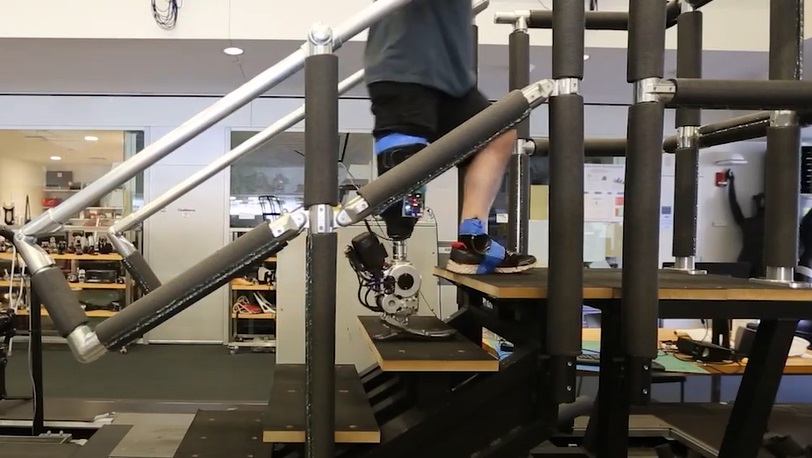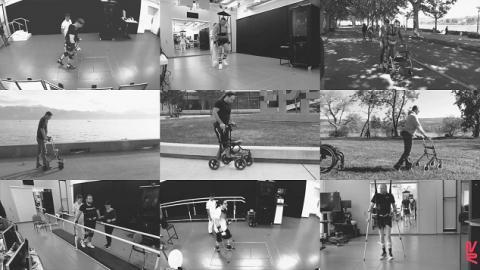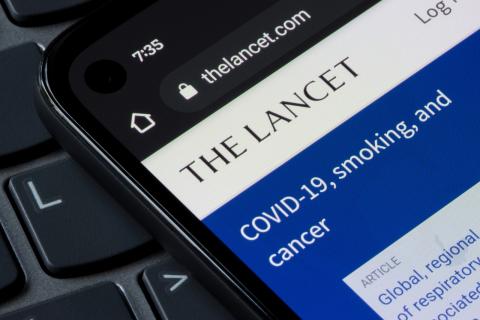Bionic leg tested for walking efficiency in amputees
A neuroprosthetic interface allows a bionic leg to respond to the nervous system of amputees to make walking faster and more natural, says a study published in Nature Medicine. The clinical trial involved 14 people with below-knee amputations: seven with a surgically attached bionic leg compared to seven without the interface.

Juan de los Reyes - pierna biónica EN
Juan de los Reyes Aguilar
Head of the Experimental Neurophysiology Group at the Research Unit of the Hospital Nacional de Parapléjicos, member of the Castilla-La Mancha Health Service (SESCAM), the Castilla-La Mancha Health Research Institute (IDISCAM) and the Spanish Society of Neuroscience (SENC)
One particularity of voluntary movement in people is that, in order to perform it correctly, we need sensory information about the posture and movement in progress (if any) that comes from the same limb that we intend to move. Thus, in the event that we decide to start walking, our sensory system of posture and movement, called proprioception, previously informs the spinal cord and the brain of the state of all the musculature that controls the leg and foot. This phenomenon is called sensorimotor integration. In other words, in order to move correctly, it is necessary to know where we are starting from (posture and/or ongoing movement of the limb), as well as to have sensory information of the changes that occur during the execution of the movement. In people with a lower limb amputation who use a prosthesis for better independence of movement in their daily life, proprioceptive information is not obtained and therefore sensorimotor integration processing is interrupted. Thus, although people with prostheses can perform the walking movement, they lose the ability to control the movement during execution, as they do not receive any information about how the prosthesis is moving and its degree of adjustment to the desired movement execution.
To solve this problem, this work has developed a lower limb prosthesis that acquires information about the execution of the movement and activates nerves with proprioceptive function that provide information to the spinal cord and, subsequently, to the brain. By incorporating proprioceptive information, the central nervous system has a greater capacity to regulate the movement to be performed with the prosthesis. Specifically, the biomechanics of walking are more similar to those of uninjured people. To this end, sensors are incorporated that collect information on the pressure produced when supporting and lifting the prosthesis off the ground. In addition, electromyography of muscle contraction in preserved regions of the leg, above the level of the amputation, is obtained. Both types of information are transformed into electrical discharges that serve to activate the proprioceptive nerves of the leg (located between the knee and the amputation site). The result is that an 'active prosthesis' is achieved, as it provides proprioceptive information to the central nervous system for better regulation of movement.
Although prostheses for amputees have been available for some time, the models used until now lacked the ability to transmit proprioceptive information, so the authors call them 'passive prostheses'. The work demonstrates that the implantation of active prostheses in amputees achieves recovery of biomechanics close to that of natural movement (which the authors call 'biomimetic'). In addition, they had faster walking speeds than people with prostheses without proprioceptive sensors. Also, by having more proprioceptive information, people wearing the active prosthesis were better able to respond to unexpected obstacles or the need to change from walking to climbing a staircase.
While the result is an improvement for the functions lost by people with an amputated lower limb, the mechanism to be implemented is bulkier, heavier and more complex than the sensorless prosthesis. It is possible that the excessively bulky appearance of the active prosthesis may create rejection in its use by some people, with classic prostheses being easier to wear and more integrated into the person's anatomy, allowing for normal dressing, etc. The authors discuss this point and consider that it may be a limit to the widespread use of active prostheses. Therefore, one of the foreseeable improvements in the design of future active prostheses will require miniaturisation of the technology; it may help to reduce the weight and volume of the whole mechanism required to implant the sensors and transmit proprioceptive information.
Hyungeun Song et al.
- Research article
- Peer reviewed
- Clinical trial
- People



